|
||||
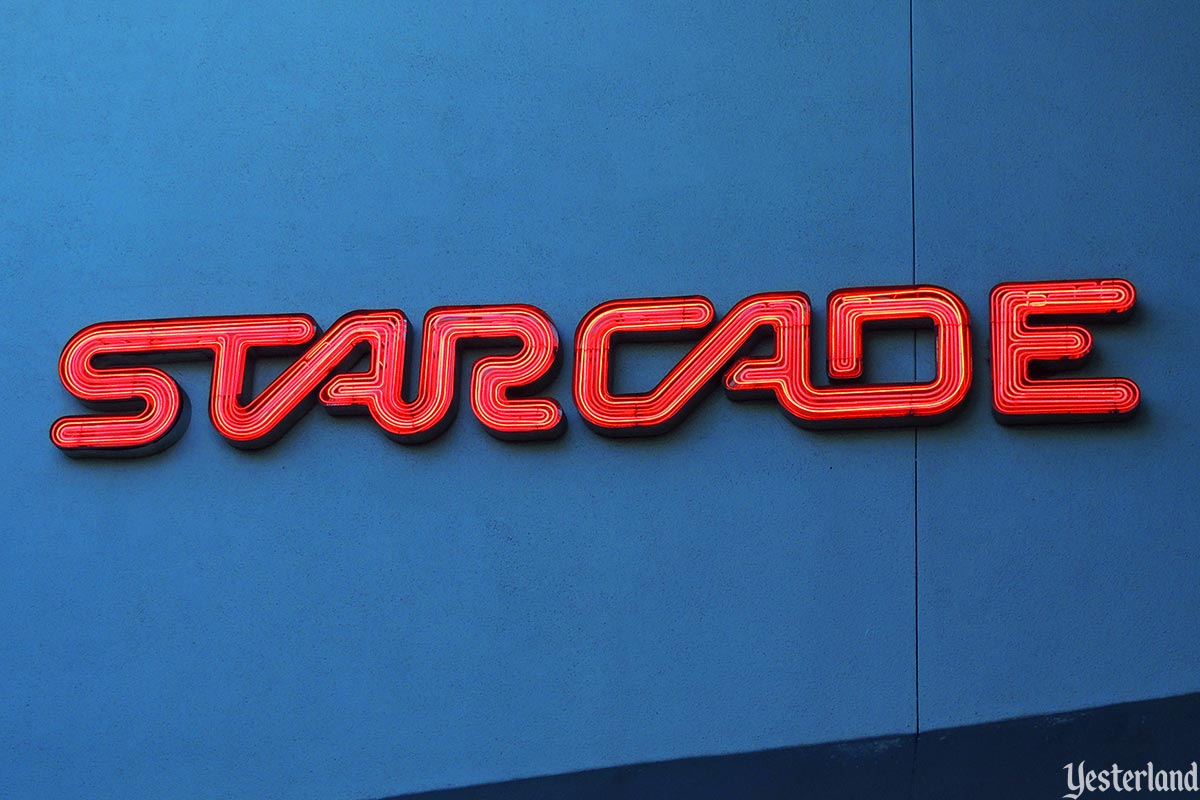
Photo by Werner Weiss, 2015 |
||||
|
You’re visiting Yesterland Park. The time is after all-inclusive Passports completely replaced ticket books in 1982. Once you’ve paid the gate admission, all rides, shows, and other attractions are yours to enjoy at no additional cost. |
||||
|
|
||||
|
Well, almost… You still have to pay for the Frontierland Shooting Gallery. If the Big Game Safari Shooting Gallery were still around, you would still have to pay for it too—but it disappeared at the beginning of 1982. And then there’s this place—Starcade. Your guidemap promises “two floors of the most popular video games” and calls it “a stellar experience.” Be prepared to stick dollar bills into coin change machines. |
||||
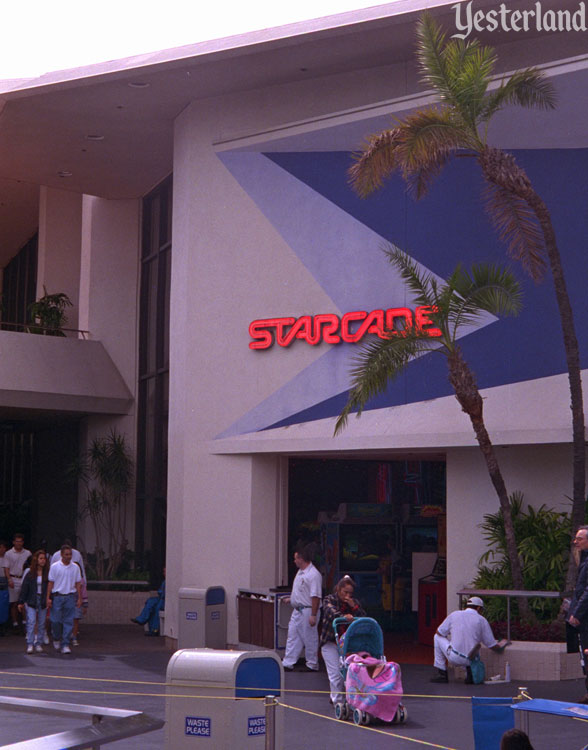
Photo by Werner Weiss, 1996 Entrance |
||||
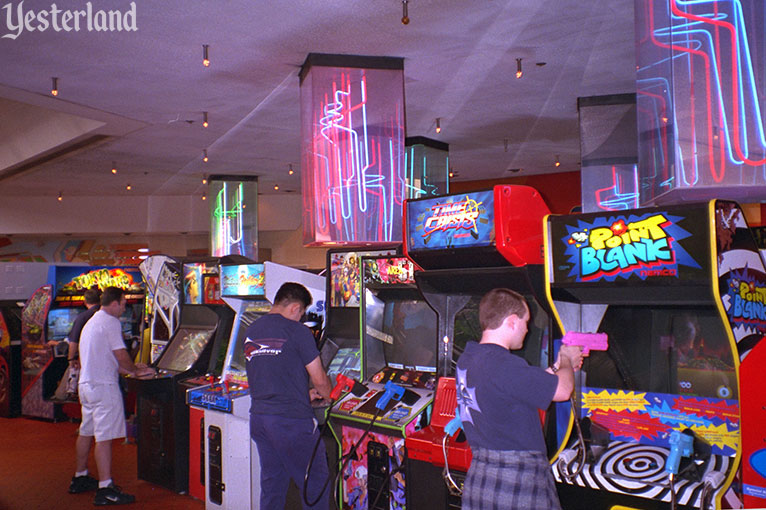
Photo by Werner Weiss, 1996 Point Blank by Namco: Shoot a pink gun at criminals, fluffy yellow birds, and more. |
||||
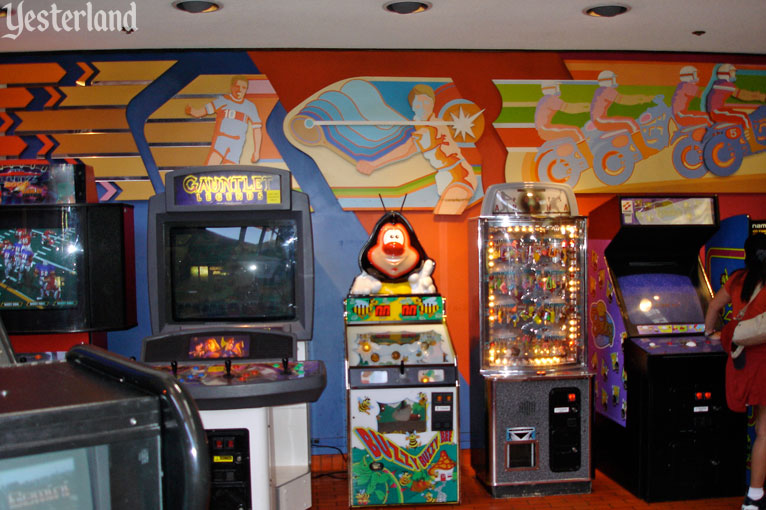
Photo by Allen Huffman, 2004 Buzzy Buzzy: Catch bees (striped yellow-and-black balls) floating around in the air. |
||||
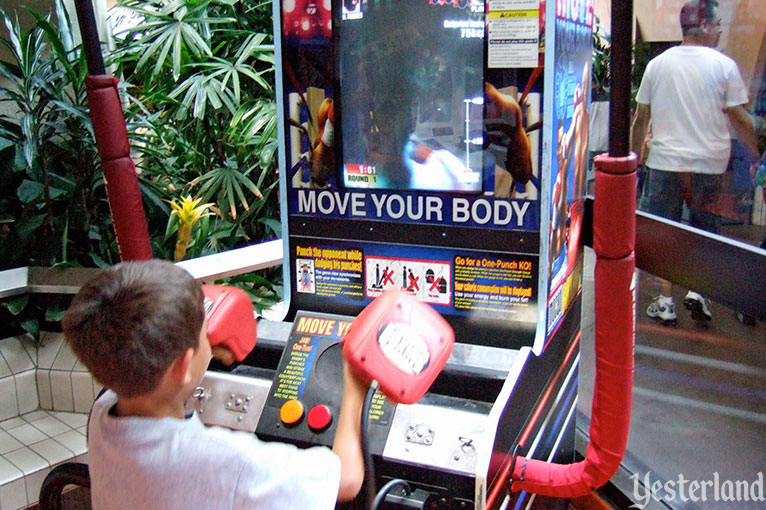
Photo by Allen Huffman, 2005 MoCap Boxing by Konami: Use red plastic “boxing gloves” to throw punches. |
||||
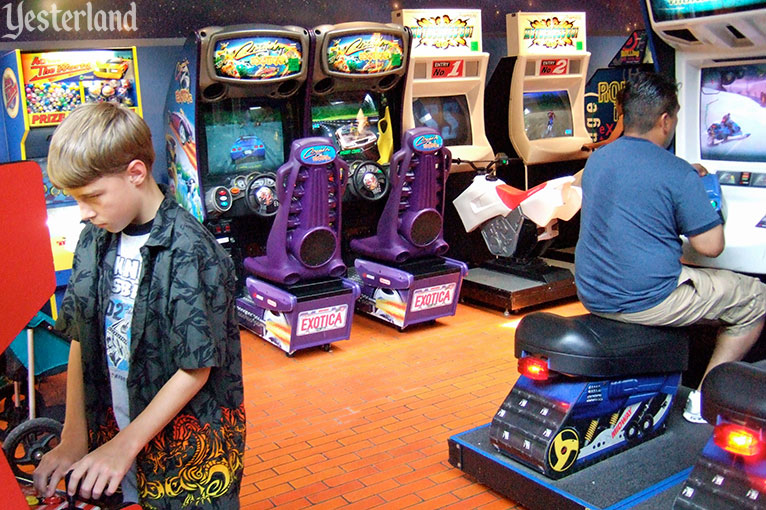
Photo by Allen Huffman, 2005 Fun for all ages |
||||
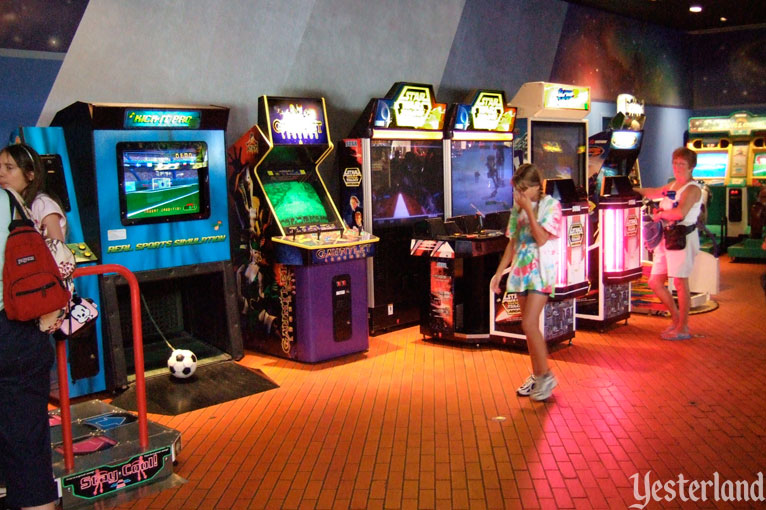
Photo by Allen Huffman, 2005 Admire the orange tile floor |
||||
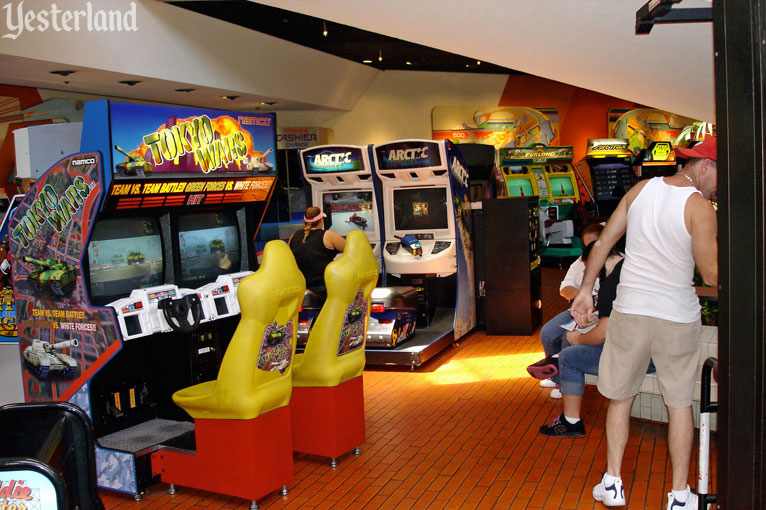
Photo by Allen Huffman, 2004 Tokyo Wars by Namco: Two-person (competitive) tank combat simulator |
||||
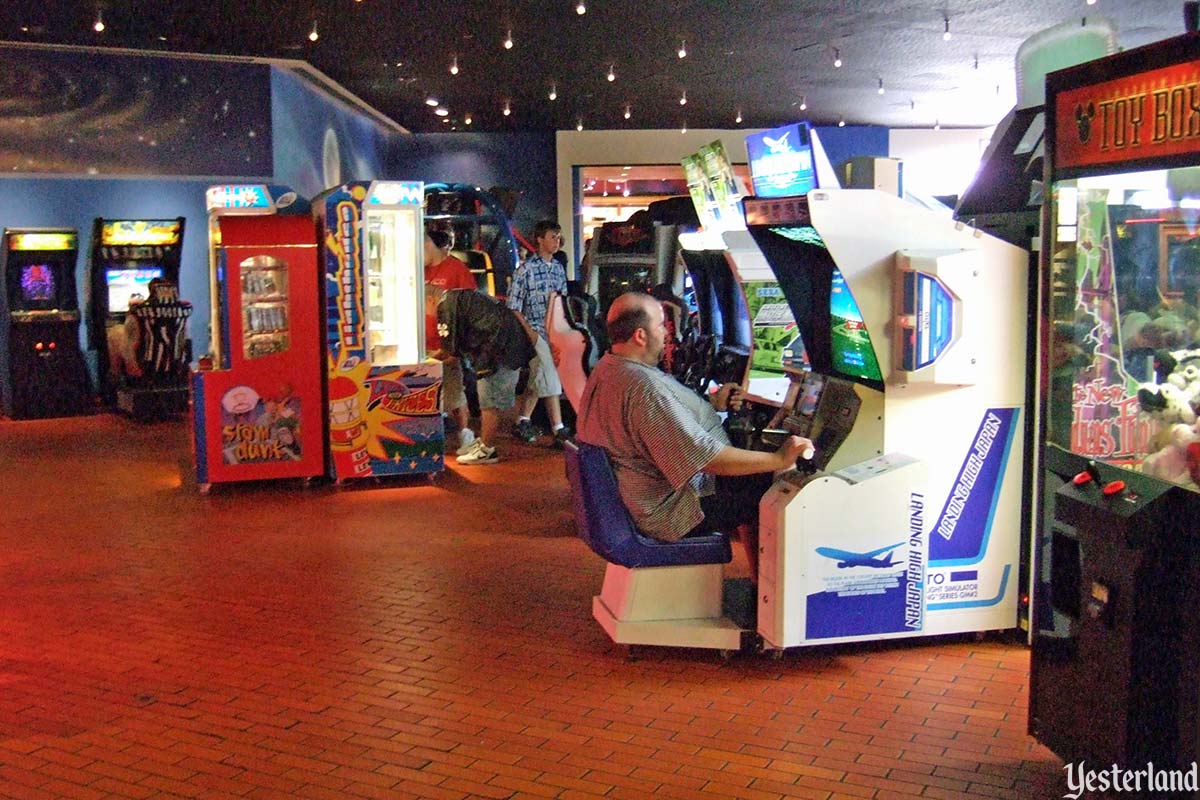
Photo by Allen Huffman, 2005 Landing High Japan by Taitco: Pilot your airliner to take off from and land at Japanese airports. |
||||
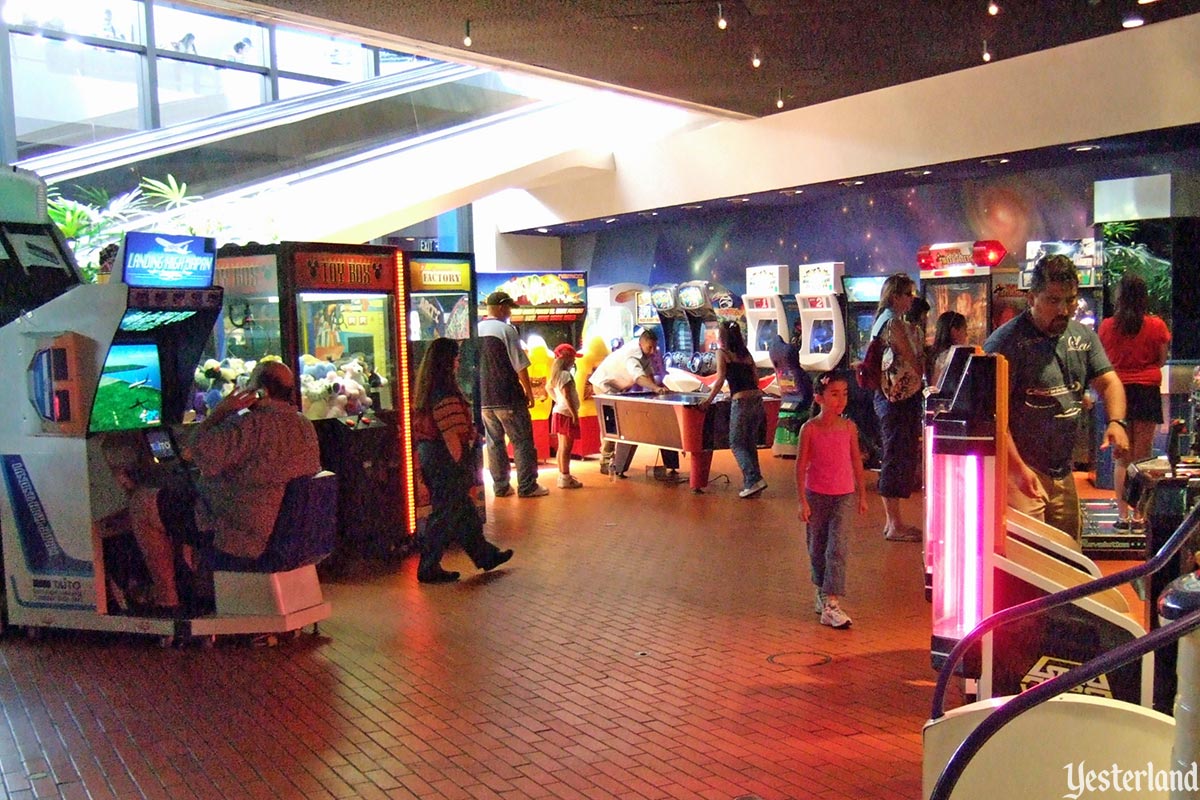
Photo by Allen Huffman, 2005 Ramp to the second level in the background |
||||
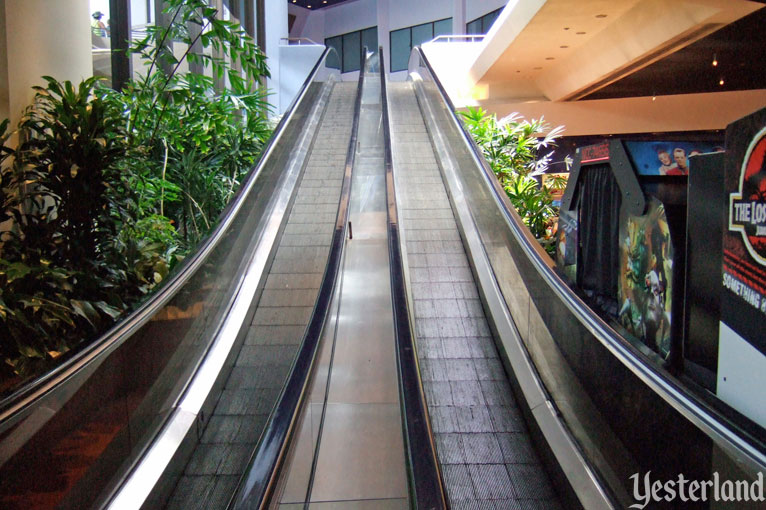
Photo by Allen Huffman, 2005 Why is nobody on the Speedramps? |
||||
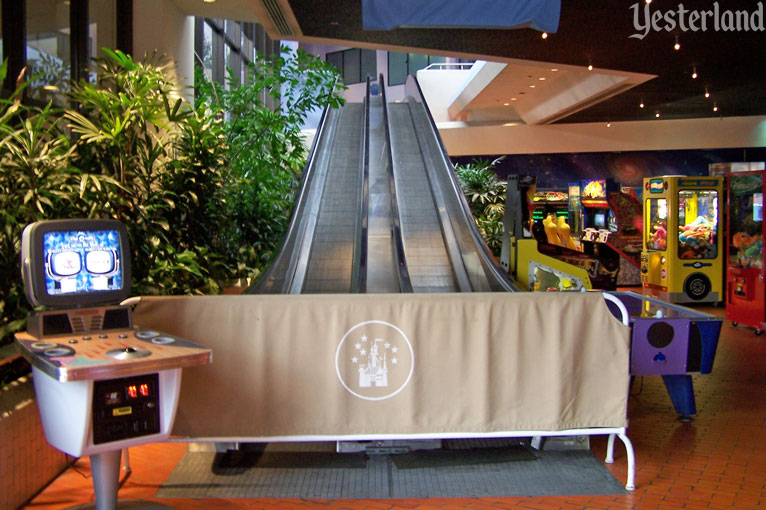
Photo by Chris Bales, 2007 Because they’re blocked. |
||||
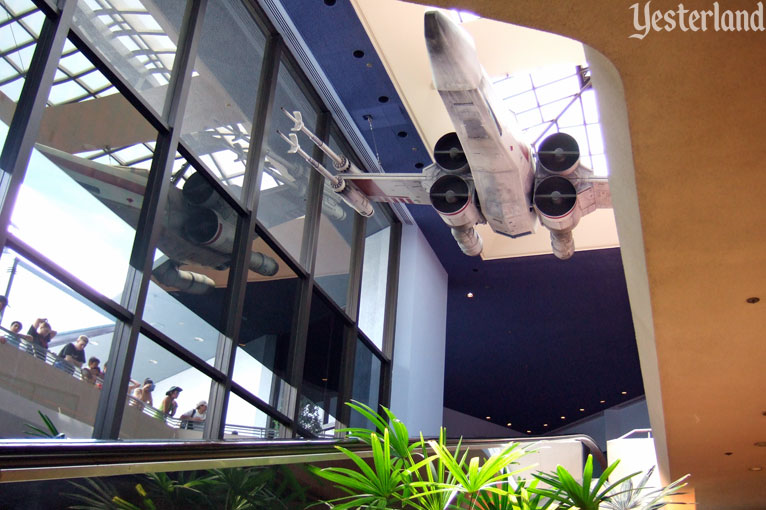
Photo by Allen Huffman, 2005 X-wing Starfighter hanging above the Speedramps |
||||
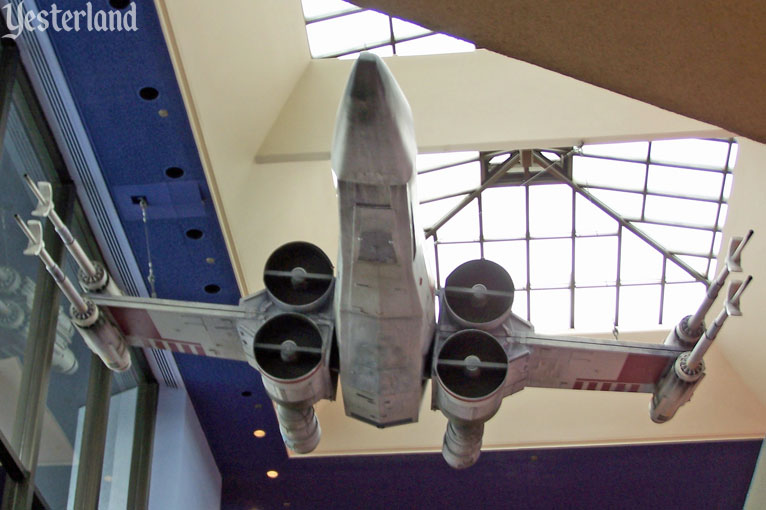
Photo by Chris Bales, 2007 A closer look at the X-wing Starfighter |
||||
|
And what location would you prefer? A space in a suburban mall next to a Montgomery Ward store? Or two grand levels with orange tile floors and a skylight with an X-wing Starfighter—all within the futuristic excitement of Tomorrowland? |
||||
|
|
||||
|
Starcade opened at Disneyland on May 4, 1977. It had been almost ten years since New Tomorrowland opened with such features as Monsanto’s Adventure Thru Inner Space, Goodyear’s PeopleMover, General Electric’s Carousel of Progress, Rocket Jets high atop the PeopleMover loading platform, the Tomorrowland Stage, and tile murals by Mary Blair. Starcade was part of the new Space Mountain complex—essentially New Tomorrowland, Part 2. On the same day that Starcade opened, Disneyland’s version of Space Mountain premiered. Space Stage, a 1000-seat amphitheater, replaced the Tomorrowland Stage. And The Space Place, a 670-seat counter-service restaurant, began feeding hungry guests. By the end of the month, the PeopleMover returned with the Superspeed Tunnel (but not yet with Tron footage) and a realigned track. The timing was right for Starcade. It was the Golden Age of commercially successful arcade video games. Popular machines before and after the opening of Starcade included “Pong” (1972), “Tank” (1974), “Anti-Aircraft” (1975), “Space Invaders” (1978), “Galaxian” (1979), “Lunar Lander” (1979), “Asteroids” (1979), “Pac-Man” (1980), “Donkey Kong” (1981), “Frogger” (1981), and “Ms. Pac-Man” (1982). 1977 was also the year when Atari founder Nolan Bushnell launched Chuck E. Cheese’s Pizza—where pizza was secondary to arcade video games. In fact, there were plenty of other places to drop quarters into video games. They could be found at almost every shopping mall. But few arcades could match Starcade for size and variety. “Arcade games were everywhere. Every convenience store or grocery store seemed to have one or two,” observed Allen Huffman, the photographer of many of the photos in this Yesterland article. “When all those locations in malls closed—with the ones remaining evolving into ticket-issuing redemption games—Starcade remained. It survived well after the local arcades were around.” |
||||
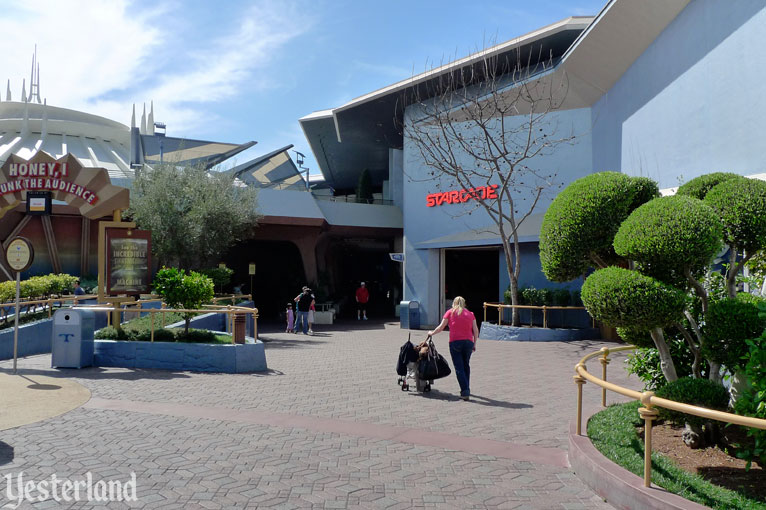
Photo by Allen Huffman, 2009 Starcade in 2009, almost a decade after the 1998 makeover of Tomorrowland |
||||
|
Yes, Starcade was a survivor. But not all of it. The second floor was the first part to go, some time during the 1990s. The oldest photos in this article are from 1996. By then, the heyday of Starcade and of video arcades elsewhere was already in the past. After the exterior Speedramp escalators for the Space Mountain queue disappeared in 1997, the interior Speedramp escalators in the Starcade temporarily took on that role. In the years that followed, the second level of Starcade was used as meeting space and storage space. The Speedramp escalators were blocked by temporary barriers. From time to time, newer games would replace some of the older games on the ground floor. The popularity of classic games had a resurgence, despite their primitive graphics, compared to newer games. Since the end of 2007, Starcade has sometimes been used for temporary movie promotions, sometimes as retail space, and sometimes just shuttered. |
||||
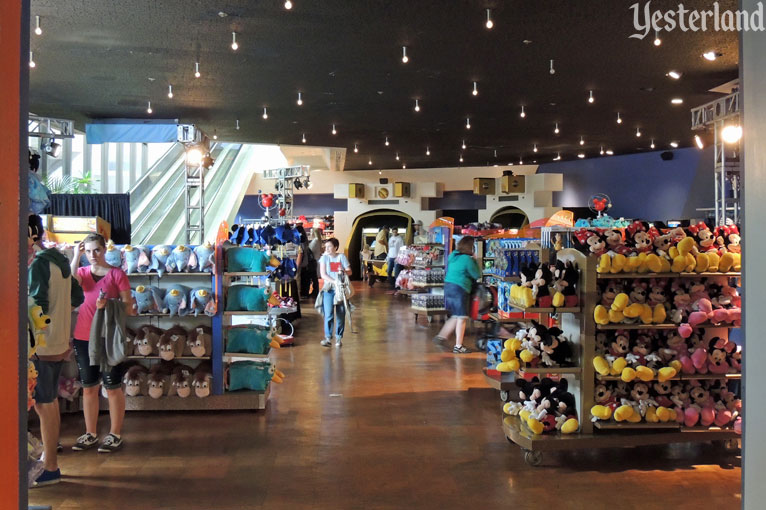
Photo by Werner Weiss, 2013 Star Trader merchandise overflowing into Starcade |
||||
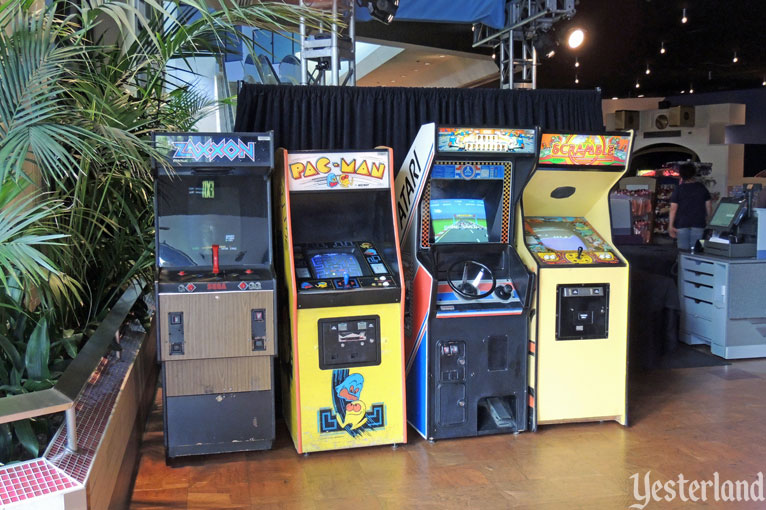
Photo by Werner Weiss, 2013 A few vintage arcade games at the bottom of the blocked Speedramps |
||||
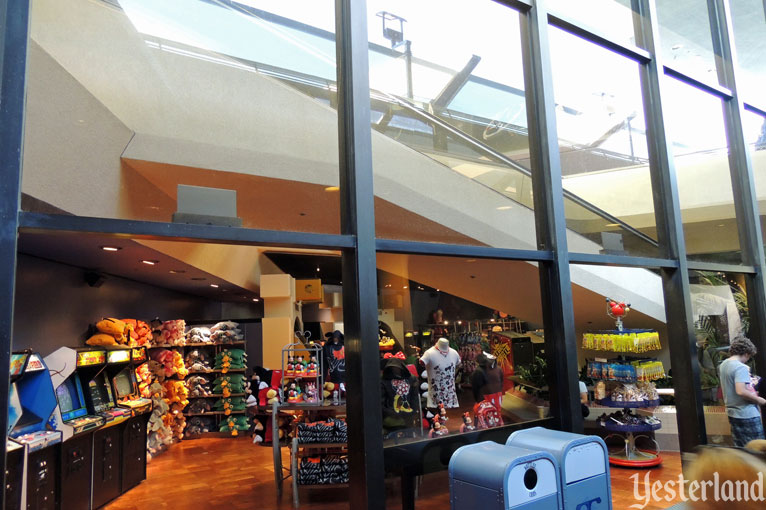
Photo by Werner Weiss, 2013 How many games does it take to make a store an arcade? |
||||
|
In late 2012, Starcade was the perfect setting for the arcade world of Disney’s animated feature Wreck-It Ralph (2012). Ralph and Vanellope greeted guests. Nearby, guests could play classic arcade games from the era when Starcade was new. There were “Fix-It Felix, Jr.” arcade games, based on the movie. In 2013, Ralph and Vanellope moved out. Merchandise moved in. Some of the arcade games remained. In late 2014, Baymax and Hiro from Big Hero 6 (2014) moved in. Starcade became their San Fransokyo workshop. The following year, an elaborate display for Tomorrowland—the 2015 movie, not the theme park land—took up temporary residence. |
||||
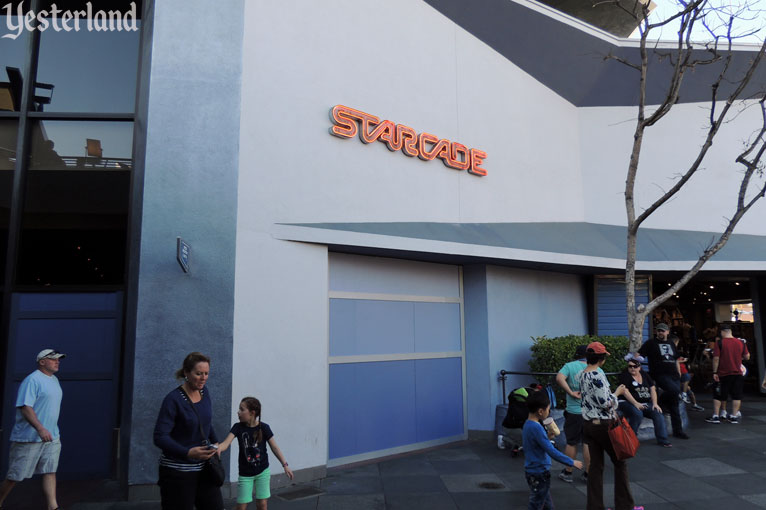
Photo by Werner Weiss, 2015 Closed permanently in 2015? |
||||
|
Usually, Yesterland attractions have an official closing date. But not Starcade. Technically, Starcade hasn’t really “gone to Yesterland” at all. The online version (at the Disney D23 website) of Dave Smith’s Disney A to Z—the definitive resource for official opening and closing dates—has an opening date but no closing date, at least as of October 2021. |
||||
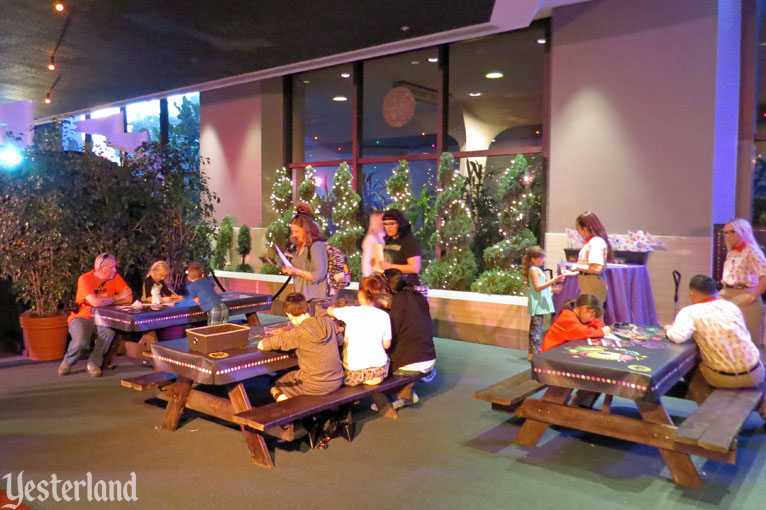
Photo by Chris Bales, 2017 Starcade during Annual Passholder Days, 2017 |
||||
|
From February 10 through March 9, 2017, Starcade served as the AP Welcome Center for Disneyland Annual Passholders, with retro character experiences, exclusive AP Days merchandise, and paper crafts for the family. |
||||
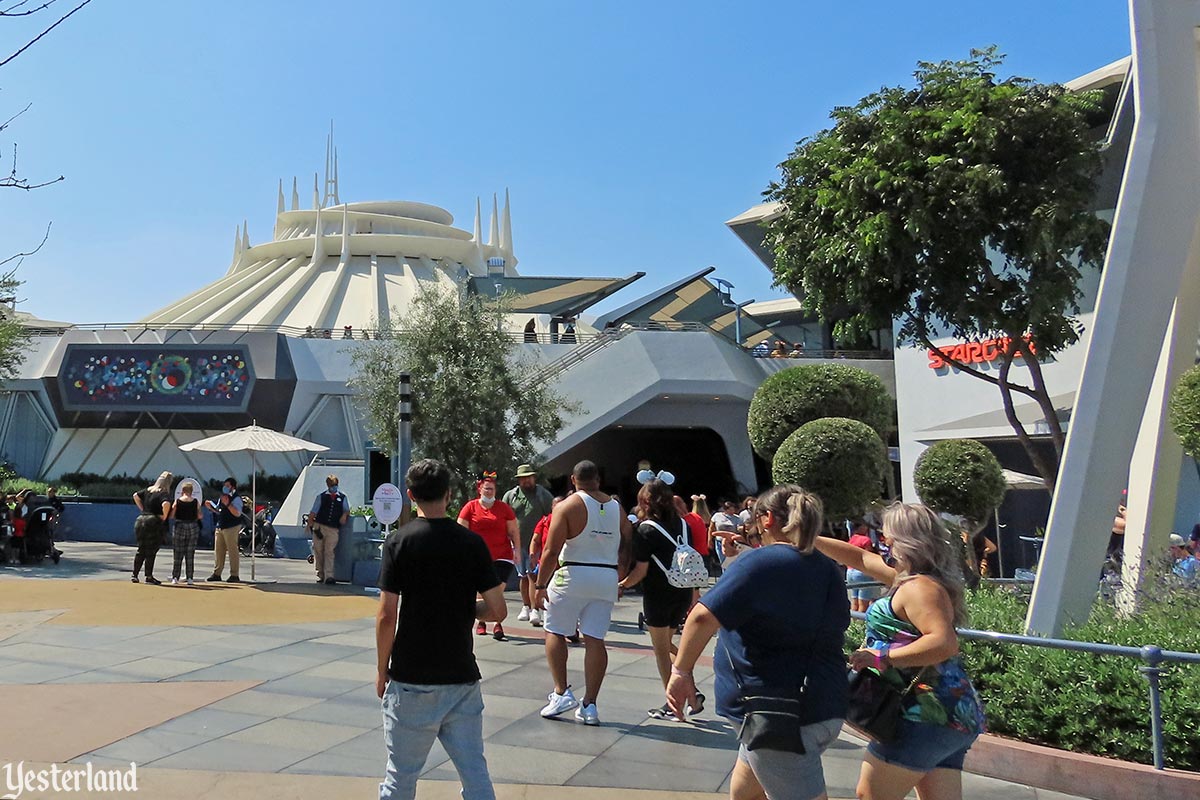
Photo by Chris Bales, 2021 Tomorrowland, still with Starcade in 2021 |
||||
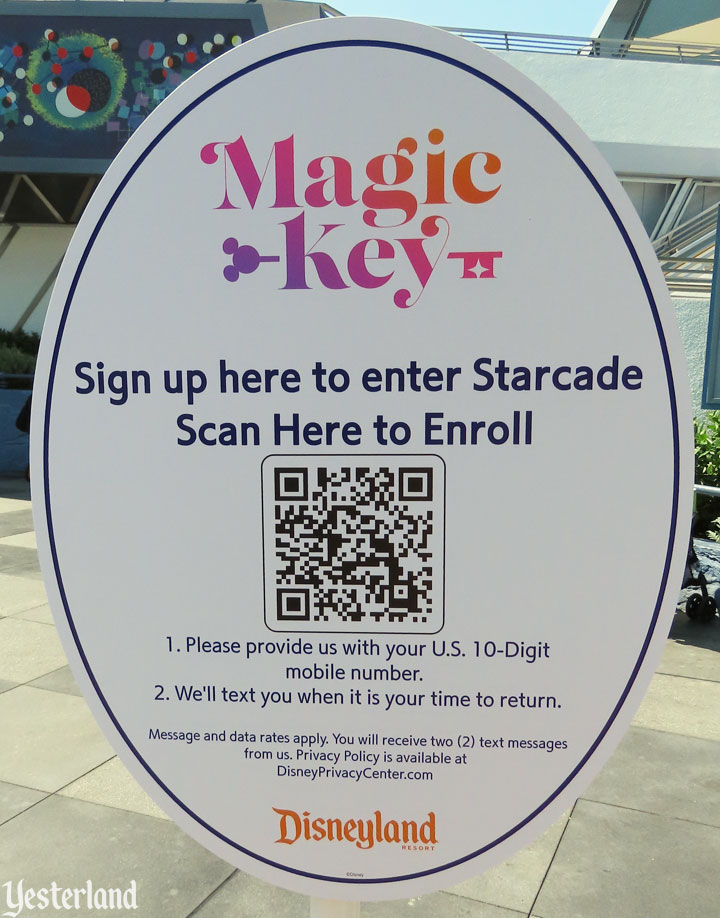
Photo by Chris Bales, 2021 Limited-time experience for Magic Key holders Starcade |
||||
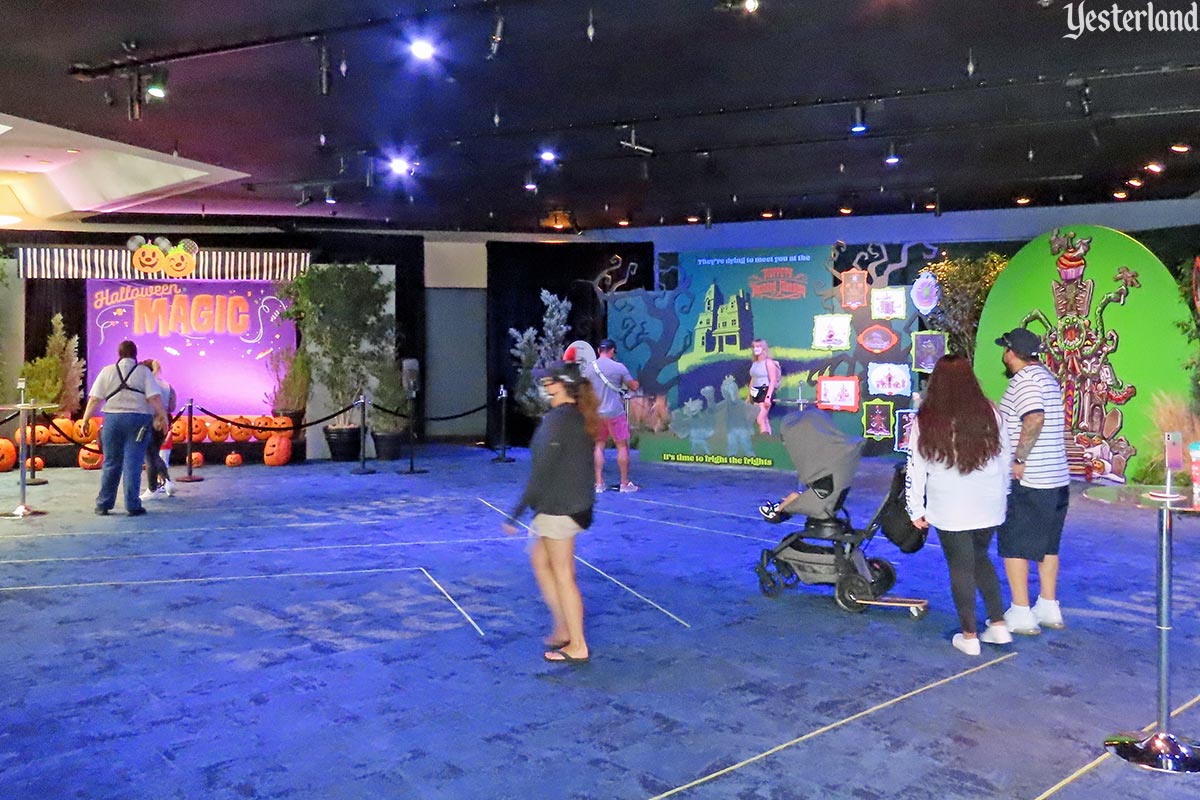
Photo by Chris Bales, 2021 Photo ops for Magic Key holders inside Starcade |
||||
|
In September and October 2021, Starcade has been where Magic Key (new annual pass program) holders, in the words of the Disney Parks Blog, “can enjoy charging stations, a special photo opportunity, and other fun surprises.” Instead of closing, the once popular game arcade has faded away over time. Disneyland still has Starcade. The neon sign for it is still there. But that’s about all. Nobody would mistake today’s Starcade, with its intermittent use for various temporary events, for the popular collection of state-of-the-art video games it once was. |
||||
|
|
Click here to post comments at MiceChat about this article.
© 2021 Werner Weiss — Disclaimers, Copyright, and Trademarks Updated October 29, 2021 |
|||